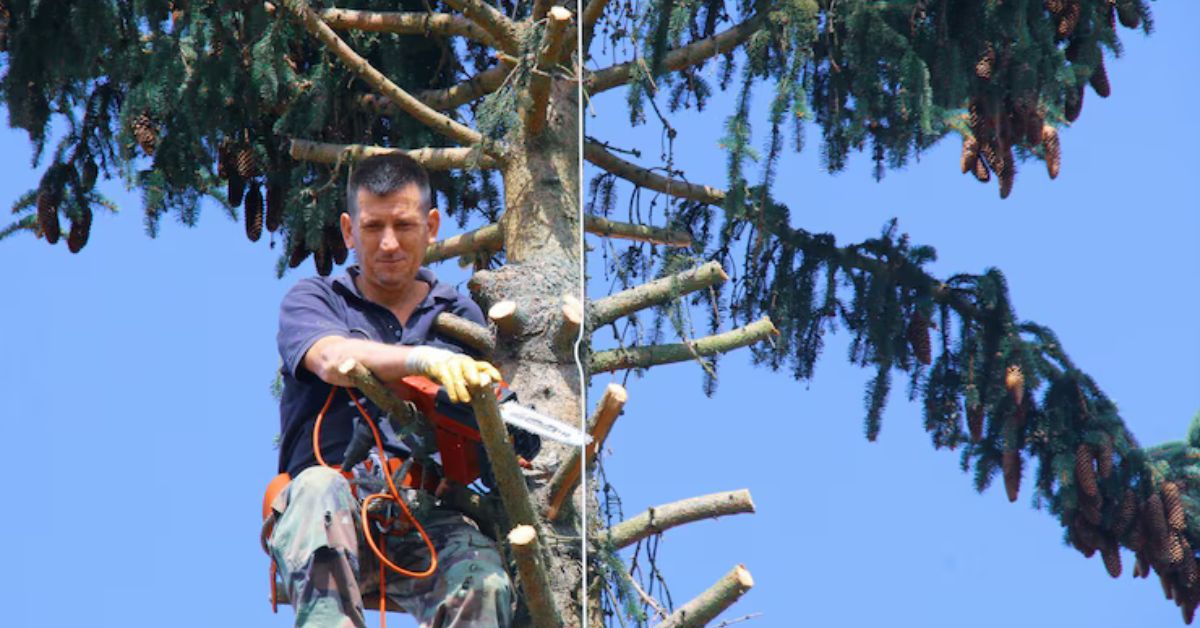Understanding Tree Services: From Trimming and Pruning to Lot Clearing
Tree services encompass a wide array of professional tasks designed to maintain, manage, and remove trees and vegetation in both urban and rural landscapes. These services range from precise trimming and pruning for the health and aesthetics of trees to complete removal of trees, stumps, and even entire lot clearing. Tree care is vital not only for maintaining the visual appeal of a landscape but also for ensuring public safety and ecological balance. This article explores the different types of tree services, the methods involved, and the importance of each service.
The Role of Tree Trimming and Pruning
Tree trimming and pruning are essential tree maintenance practices that aim to preserve tree health, structure, and appearance. Trimming generally refers to cutting away overgrown branches to shape the tree or bush and allow light and air to reach the inner canopy. Pruning, on the other hand, is more targeted and often performed to remove diseased, damaged, or dead branches, as well as to guide the tree’s growth.
Regular trimming prevents branches from becoming too heavy or entangled, reducing the risk of breakage during storms or high winds. Pruning also improves the structural integrity of trees, particularly young trees that are still developing their framework. It helps to control pests and diseases by eliminating infected limbs before they spread. Seasonal trimming ensures trees do not interfere with power lines, rooftops, or walkways, which is particularly important in residential and commercial areas.
Timing and Techniques for Effective Tree Maintenance
The timing of tree trimming and pruning is crucial for its effectiveness. For most trees, the dormant season—late winter to early spring—is the best time to prune. This is when trees are not actively growing, which reduces stress and allows cuts to heal faster. Summer pruning is sometimes performed to slow the growth of certain branches or to remove defective limbs that may become hazardous in stormy weather.
Various pruning techniques include thinning, topping, raising, and reduction. Thinning removes select branches to improve light penetration and air movement. Topping, a more drastic method, cuts down the main branches and should be used cautiously due to its potential to harm the tree. Raising involves removing the lower branches to provide clearance for buildings, vehicles, or pedestrians. Reduction decreases the size of the tree while maintaining its structural integrity.
Complete Tree Removal and Its Necessity
While preserving trees is often the goal, there are situations where tree removal becomes necessary. Dead, dying, or diseased trees can pose a significant hazard to people and property. Trees that lean dangerously or have root systems interfering with underground utilities, foundations, or driveways may require removal. In some cases, trees are removed to allow for new construction, landscaping changes, or to reduce overcrowding in densely wooded areas.
Tree removal is a complex process that requires planning, skill, and specialized equipment. The operation typically begins with an assessment of the tree’s condition, height, and proximity to nearby structures. Professionals may climb the tree and cut it down in sections, or they might use cranes and rigging systems to safely lower large limbs to the ground. Safety is a major concern throughout the process, as falling limbs or equipment failures can lead to serious injuries or property damage.
Stump Removal and Why It Matters
Following tree removal, the stump that remains is often overlooked, but it can become an issue if not properly managed. Stumps can become breeding grounds for pests like termites, ants, and beetles. They may also harbor fungi or diseases that can spread to healthy trees nearby. Additionally, stumps can obstruct landscaping efforts, pose tripping hazards, and be unsightly in otherwise well-maintained areas.
Stump removal is carried out using one of several methods, including grinding, digging, or chemical treatments. Stump grinding is the most common technique, which involves using a specialized machine to shred the stump into mulch-like debris. Grinding is relatively fast and minimizes soil disruption. In contrast, digging out a stump is labor-intensive but ensures complete root removal. Chemical treatments take longer and are used in areas where mechanical removal may not be feasible.
The Process and Challenges of Lot Clearing
Lot clearing is an extensive service that involves removing all trees, stumps, shrubs, and undergrowth from a piece of land. This is commonly done in preparation for construction projects, agricultural development, or to convert wooded areas into usable space. Clearing a lot may involve a combination of tree removal, brush cutting, debris hauling, and grading the land to ensure it is level and safe for future use.
The process of lot clearing begins with a site assessment to identify the types of vegetation present, terrain features, and any environmental regulations that may apply. Once a plan is established, machinery such as bulldozers, excavators, mulchers, and stump grinders are brought in. Trees are felled and sectioned for removal, while brush and smaller plants may be mulched or burned, depending on local guidelines.
One of the biggest challenges in lot clearing is the environmental impact. Removing large amounts of vegetation can result in soil erosion, habitat loss, and changes to the local water table. Erosion control measures, such as silt fences, replanting ground cover, or using retaining walls, may be necessary to mitigate these effects. Additionally, lot clearing must comply with zoning laws, environmental regulations, and permit requirements, making it essential to approach the process with proper planning and compliance.
Safety Considerations in Tree and Lot Services
Tree trimming, removal, and lot clearing are inherently dangerous tasks. Working at heights, handling power tools, and managing heavy machinery all present risks that require thorough safety protocols. Falling limbs, electrical hazards from nearby power lines, and unstable trees are some of the dangers faced during these operations. Professional tree services follow strict safety guidelines, including the use of personal protective equipment, regular equipment inspections, and careful work planning.
Communication among crew members is vital to ensure a coordinated approach. In tree removal operations, workers on the ground and those in the tree must be synchronized to avoid missteps. When clearing lots, traffic management and the secure movement of heavy machinery are crucial for preventing accidents. Safety training and certification are important elements of professional tree service work and help minimize risks for workers and clients alike.
Environmental Considerations in Tree Services
While tree removal and lot clearing are sometimes necessary, they should always be carried out with an understanding of their environmental impact. Trees play a critical role in carbon sequestration, erosion control, wildlife habitat, and overall ecosystem health. Whenever possible, selective trimming, pruning, or transplanting may offer more sustainable alternatives to full removal.
Tree services often work with environmental consultants or urban foresters to assess the ecological value of trees on a property. Some municipalities require permits for tree removal, particularly for trees of a certain size or species. Replanting efforts or tree compensation policies may be required to maintain canopy coverage and biodiversity in urban areas.
Responsible tree services also consider how to dispose of tree debris in an eco-friendly way. Mulching, composting, or repurposing wood for lumber or firewood helps reduce waste and supports sustainability. In cases where diseased trees are removed, special disposal methods are used to prevent the spread of pathogens to other trees or soil.
Tree Services and Urban Development
Urbanization and population growth have increased the demand for land development, leading to more frequent tree removals and lot clearing projects. However, integrating tree services into urban planning can help cities maintain a balance between development and nature. Urban trees improve air quality, moderate temperatures, reduce stormwater runoff, and enhance property values.
Incorporating tree assessments into building plans ensures that valuable or historic trees are preserved or relocated where feasible. Tree protection zones can be established during construction to minimize damage to root systems and trunks. City ordinances may also dictate the number and type of trees that must be planted as part of landscaping requirements.
Tree services play a vital role in urban development by managing vegetation in a way that aligns with safety, aesthetic, and ecological goals. Professional arborists can assess the long-term health of trees and recommend maintenance plans that prevent future hazards or conflicts with infrastructure.
Conclusion
Tree services encompass a broad range of activities that are essential for maintaining safe, functional, and beautiful outdoor spaces. From the routine tasks of trimming and pruning to more involved operations like tree removal, stump grinding, and lot clearing, each service requires expertise, proper equipment, and an understanding of environmental and safety standards. As urban and rural landscapes continue to evolve, responsible tree care remains a key component in ensuring that development and nature coexist sustainably. Whether managing a single tree or transforming an entire property, the value of skilled tree services cannot be understated.







